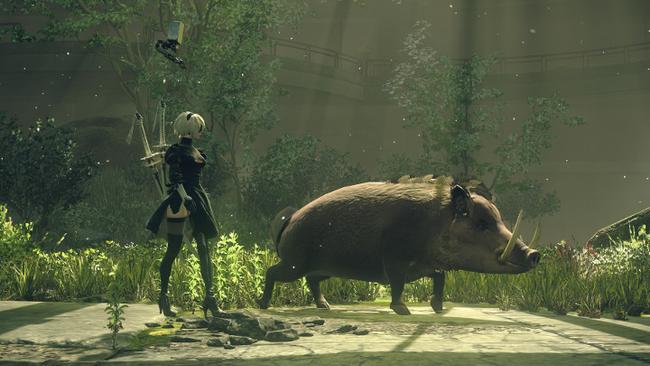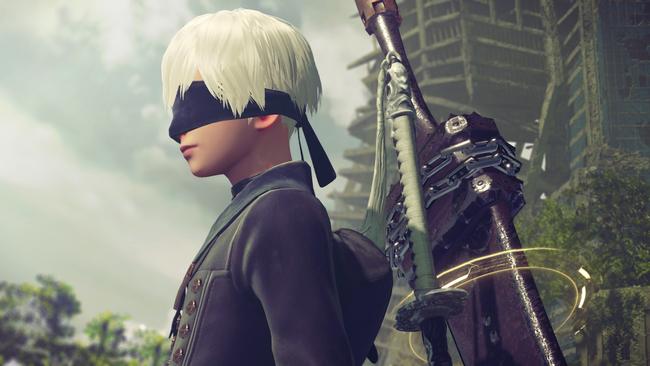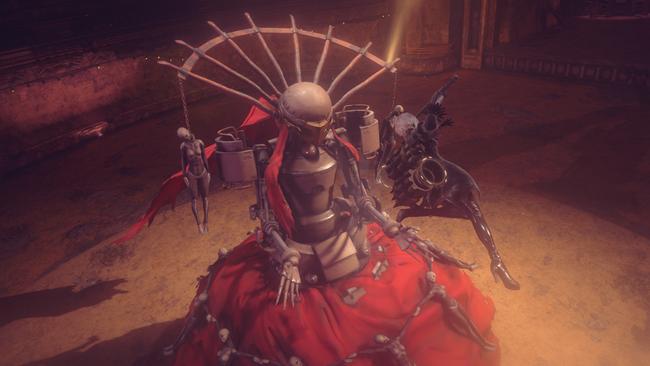
The Strange Works of Taro Yoko Review
I’ve loved the games of Taro Yoko for the longest time. At the impressible age of 15 is when I first played Drakengard, and I’ve followed his work ever since. Taro’s stories are ones that really used video games as a storytelling medium, and the plot’s intricacies unfold in such a way that other mediums can’t always handle as well.
As such, I was very excited to hear that Third Editions was creating a book on the enigmatic creator, providing an in-depth examination of the intertwining plots of his games as well as a look into the development process. What comes from The Strange Works of Taro Yoko is a great in-depth look at the universe created in the Drakengard and NieR titles, but also a book that’s difficult to recommend except to the most diehard of fans.

While The Strange Works of Taro Yoko has the same components as Third Editions’ other books--lore summaries, analysis, development, and so on--the chapters are re-arranged for this book. The focus is Taro, after all, and while the usual lore tidbits are still here, it’s important to focus on the man himself first.
As such, the first chapter focuses on the development of the Drakenier games, while also providing insight into the game development climate in Japan at the time. It tells the story of a strange developer that sometimes was down on his luck, and other times the luckiest man around. The context of the Japanese video game climate was also helpful at times. I do feel that, sometimes, this first chapter meandered at times. There was a couple of sections of the chapter that felt a little extraneous, but this didn’t happen so often as to turn me away.
The second chapter is dedicated to the well-acclaimed music of the games. This is slightly different than other books from Third Edition, which helps to stress the importance of the soundtracks of Taro’s works, as the musical chapters are usually placed at the end. NieR and NieR: Automata, in particular, are both well-known for their emotional and wonderful soundtracks. This chapter gives a deep dive into how some of the most iconic tracks were created, and the wealth of information will definitely please video game music buffs.

Chapter 3, which what takes up the majority of the book, involves providing a chronological breakdown of the plots of the games and the Drakenier universe. It’s very in-depth, including plot beats from media outside of the games, like novels and stage plays, to fill in holes for fans that may not have been able to get a hold of the (generally Japanese only) information otherwise.
However, the general set-up of a dry, in-order retelling of each game’s story sort of ruins the magic of Taro’s storytelling in the first place. In the games, information is often intentionally withheld from the player, to be revealed in dramatic fashion later. When the plot is put down plainly on paper, with the plot twists revealed as a background detail instead of a big reveal, it really comes off as pretty boring… which is certainly not how it feels when you’re actually playing the games.
Therefore, this chapter is good as a reference, but definitely not the ideal way to experience these games’ plots. Still, there’s a lot of information to glean from the pages you may not know otherwise.

Finally, there’s the typical narrative analysis and themes for each game. This chapter provides some always interesting insight into the themes of each game’s plot, but frankly, I was fatigued from reading 70 or so pages of the plot itself to truly want to delve into deeper dives of various aspects of the games. I found this odd, as I didn’t have the same problem with the massive Compilation of Final Fantasy VII for The Legend of Final Fantasy VII, but the latter book was organized in a bit of a different way.
I must bring up one final criticism before closing the review out. Like in The Legend of Final Fantasy VI, I find that the paragraphs are far too large for easy reading. I find it interesting that this problem has cropped up again, as the three books I review between The Legend of Final Fantasy VI and now had the same problem. With a physical copy, it means sometimes losing your place, but with an ebook, that means multiple pages without so much as a paragraph break, and that’s far from ideal reading.
Overall, I enjoyed my time with The Strange Works of Taro Yoko, especially as a fan of the man’s works. But, it’s far from a book I’d recommend to casual fans of the complex universe he’s created. It’s a great companion piece for long-time fans, and if you’re looking for more unofficial content to read about for the Drakenier universe, you can’t go too wrong. But, this title isn’t as accessible as The Legend of Final Fantasy books, due in part to the universe’s complexity, and it’s important to keep in mind when going for a purchase.